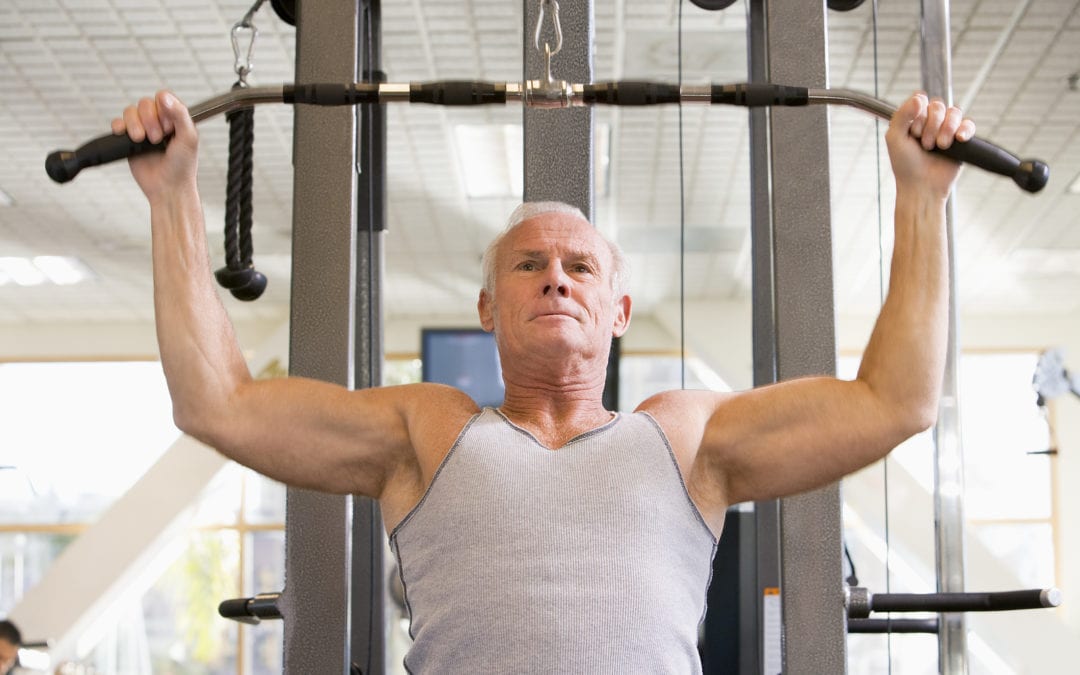taying Fit in Your Senior Years
No matter your age, staying fit is critical to maintaining good health. While senior citizens may not have the same level of fitness as they did in their younger days, they can stay healthy with the right routines and exercises. While exercising in old age may seem risky, it can provide a wide host of health benefits, such as improved flexibility, better balance, even better mental health. Better health can also mean reduced insurance costs.
What Types of Exercise Can Senior Citizens Do?
It may seem like the elderly would have limits on what activities they could perform. But, they are just as capable of performing many of the same exercises they could when they were younger – just with some adjustments. As long as they choose an activity they enjoy and don’t put too much strain on themselves, the choices are nearly endless.
As with exercising at any age, it’s good to incorporate three key elements:
- Keeping a range of movement can be difficult when joint problems develop. Daily stretching, such as yoga or Pilates, can help maintain mobility. For people with balance problems, it’s best to stretch while sitting or lying down.
- Proper strength training can help reduce the rate that bones become weaker, and muscles can provide cushioning in the event of a fall. Strength training is best when done at least twice a week for 30 minutes, with breaks between muscle groups.
- Cardio exercises increase your heart rate, which benefits the entire body. Thirty minutes of medium-level aerobic exercises almost daily is the best. People with balance problems may be safer on a treadmill than walking outside.
Many different exercises fall into these categories, so it can be easy and fun to develop a personal fitness program for your abilities, preferences and help your goal of staying fit in your senior years.
What Adjustments Do Senior Citizens Need to Make?
Seniors shouldn’t avoid exercise out of safety concerns, but proper adaptation is necessary so that staying in shape is a benefit and not a risk. Best practices include:
- Always warm up and cool down, so that the body can properly adjust to the change in activity.
- Pay attention to how the exercise feels. It should take some effort, but not be completely exhausting.
- Drink plenty of fluids, even when not feeling thirsty.
- Stay alert to the surroundings, as senior citizens don’t have as sharp of senses or as fast reaction times as younger individuals. It’s also best to stay aware of the weather, as heat and cold can affect the body more when older.
- Use proper equipment to help prevent accidents.
- Change activities if one exercise starts to cause (or exacerbate existing) health problems.
With the right planning and variety of exercise, staying fit in your senior years can be a reality for anyone, no matter their age!
Must Read: Nurse’s Tips for Fall Prevention
Just Added: How to Get Energy Without Caffeine
Read this: 12 Reason Why Older Adults Should Start Exercising
Read this next: A Senior’s Guide to Physical and Mental Fitness
Sources:
https://www.everydayhealth.com/senior-health/stay-fit.aspx
https://www.helpguide.org/articles/healthy-living/exercise-and-fitness-as-you-age.htm
http://www.mycitymag.com/stay-fit-in-your-senior-years/
https://www.verywellfit.com/exercise-for-seniors-1230955
Related Links :
New for 2023: What Does Blue Light Do to Your Eyes
New for 2022 – The Ultimate Guide to Hiking
New for 2022 – Tips for Seniors Wanting to Exercise
New for 2021 –The Connection Between Alzheimer’s and Sleep
New !! – Fall Prevention for Seniors
New!! – The Ultimate Guide to Aging Well: Diet, Exercise and Health Tips
New !! – How to sleep with hip pain
New !! – How to sleep with back pain


